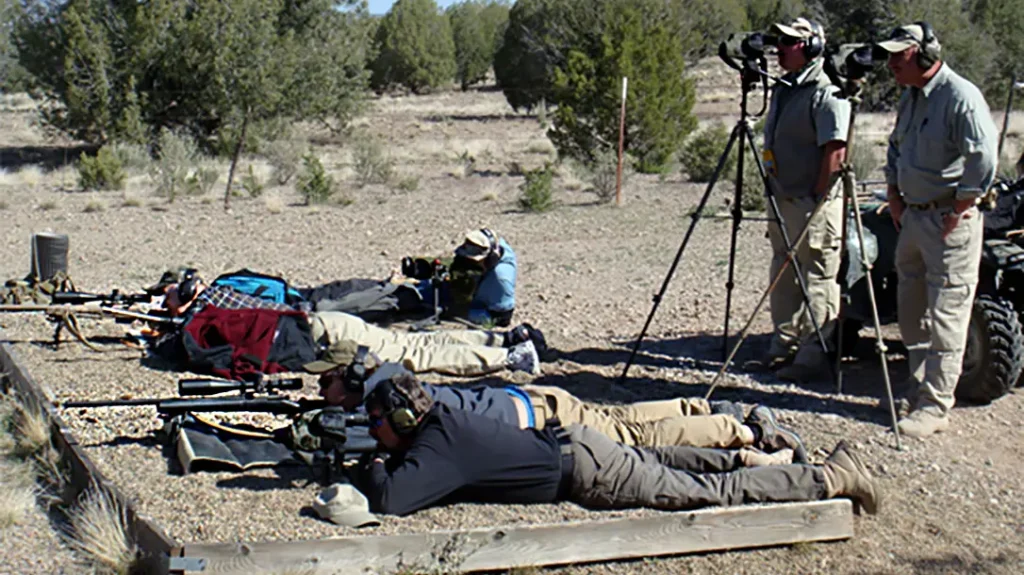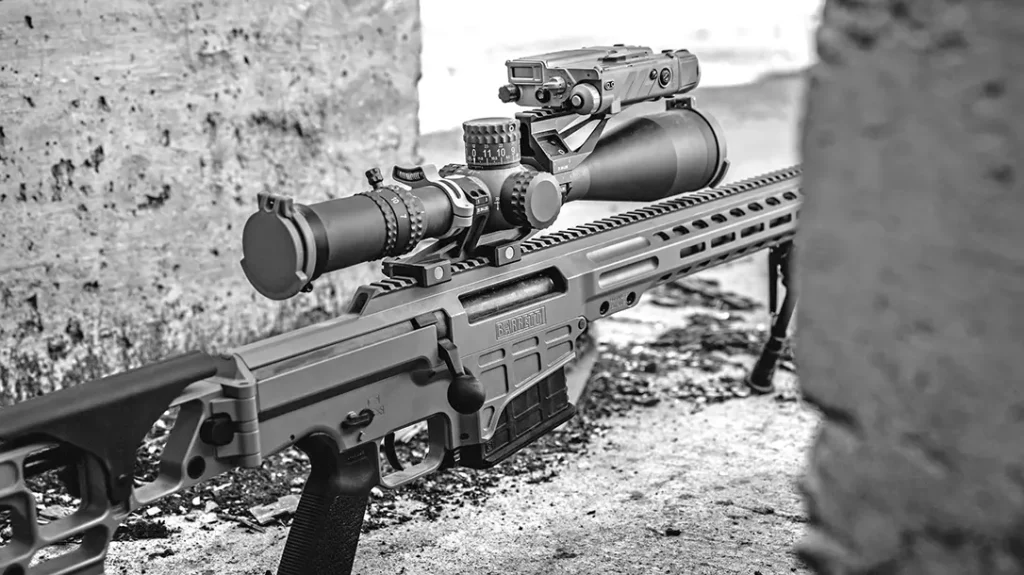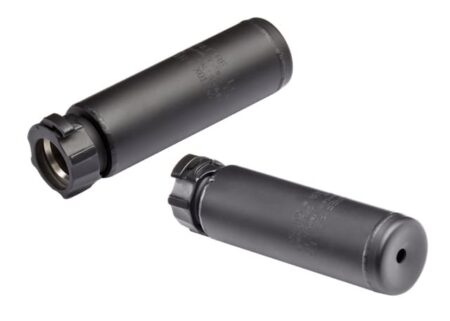In the not-too-distant past, 1,000 yards was considered a serious achievement in long-range shooting. With a growing interest in long-range shooting, however, 1,000 yards has become a relatively simple task. We have seen exceptional growth in technology, as well as in the development of rifles and bullets, and, more importantly, in shooting skills. People have begun to test the limits of their guns, skills, and ammunition. This has moved beyond long range. This is the world of extreme long-range shooting.
Flight Times Long Enough to Drink Coffee – Extreme Long-Range Shooting
The terminology associated with long-range shooting is somewhat subjective. A lot of it depends on the equipment you’re using. For example, a 300-yard shot with a .22 rifle is often considered extreme. With a 6mm PRC, however, a thousand yards is a warm-up. With that, we will examine the three different categories and provide a general description for better understanding.
Advertisement — Continue Reading Below
First up is our traditional long-range shooting. These are distances at which the bullet fired still maintains supersonic velocity. Many rounds of today’s rifles that stay supersonic will pass a thousand yards.

Ultra Long-Range
Our second category is ultra-long range. This is generally described as firing a rifle at a target at a distance at which the bullet enters transonic speed. That is the speed at which the bullet begins to transition from supersonic to subsonic. A good example of this is the beloved .308. While devotees of this round, including myself, swear it is a do-all round, it has limitations. A .308 round enters its transonic flight phase at approximately 1,000 to 1,100 yards, though this can vary depending on the specific load, barrel twist rate, altitude, and air temperature. This is the point at which the bullet’s speed drops into the range of Mach 0.8 to 1.2, causing shock waves to shift from the tip to the rear, which can significantly impact stability and accuracy.
Advertisement — Continue Reading Below
Extreme Long Range
Our third and final category is extreme long range. In this category, targets are set at distances that far exceed the supersonic speed of the bullet. These ranges are often in excess of 4,000 yards, with a bullet flight time of almost 10 seconds or more. Rounds in this category include flavors such as the .408 Cheytac, which features a 419-grain bullet.
Unlike traditional long-range shooting, extreme-long range begins with the bullet. Serious shooters choose the bullet they want to fire before anything else happens. They choose its weight, ballistic coefficient, and overall design. From that point, they will select a case and customize it to fit the bullet. The next and final step is designing the powder load for this round. The most essential goal in this build is consistency.

Advertisement — Continue Reading Below
Rifle Setup
The next critical step is to set up the rifle. These are almost exclusively bolt-action, custom-built rifles. One perfect example of that is the scope rail. A good long-range rifle will have a base with a 20 MOA rail. Ultra-long-range rifles can be fitted with 40- and even 50-MOA bases. It is simply a matter of allowing the scope and elevation to get the shot on target. Optics in this world are built around extreme precision. Shooters mount their optics, leaving just enough room to get the full range of the erector tube.
Typically, we zero rifles at 100 yards; many extreme-long-range shooters begin at 1,000 or even 1,200 yards. Scott McCree, a nationally ranked benchrest and ultra-long-range shooter, shared that he uses his ballistic calculator to calculate his hits, even at 100 yards. Entering the bullet and gun data, the device then calculates the point of impact at 100 yards. For example, he knows that at 100 yards, his impact should be exactly 16 inches above the center. This is just one way to perform zero at closer ranges.
The Physics
The factors that go into making extreme-long-range shots for many. Most fundamental factors remain the same, such as wind and environmental conditions. However, when the target is over 2 1/4 miles away, other factors come into play. Spindrift of the bullet, if not calculated correctly, can result in a complete miss. Spin drift, or Gyroscopic drift, is a phenomenon caused by the right-hand twist in our barrels. Due to the right-hand twist, the nose of the bullet tends to offset slightly to the right during flight.
Advertisement — Continue Reading Below
The effect is that even under zero wind conditions, the bullet will impact to the right of center. The effect is more pronounced at ranges beyond 600 yards. The exact amount for a specific bullet is difficult to calculate mathematically, but it can be done. The calculation is based on the stability factor of the bullet, the time of flight, the speed of twist, the physical length of the bullet, and the air density.

Rotation of the Earth
These ranges are also where the Coriolis effect really begins to come into play. The Coriolis effect, in the simplest terms, is the rotation of the Earth in relation to the bullet as it flies to the target. If you fire a bullet that’s going to be in the air for 10 seconds, the Earth will be rotating underneath it, and the target can simply rotate away. Yes, you need to take into account the Earth’s rotation.
Advertisement — Continue Reading Below
Currently, the world record for the longest rifle shot ever completed is 7,774 yards or 4.4 miles. Scott Austin and Shepard Humphries set it in Jackson Hole, Wyoming. The custom bolt-action rifle was chambered in .416 Barrett, and the hand-lathed 422-grain bullet took 24.5 seconds to reach the target.
Core Fundamentals
Beyond these extreme factors, the fundamentals of precision rifle shooting remain the Same. You must have a good position behind the rifle, execute a smooth trigger press, and follow through while remaining on the scope. In a recent shooting session with Scott McCree, I noticed that the seasoned shooter doesn’t even blink when the rifle fires. He watches the entire shot and even the bullet Trace through the scope. He commented to me that if you have done it correctly, you can be your own spotter.
With the growth and increasing interest in shooting incredible distances, more competitions have emerged, with the King of Two Mile being the most famous. The name is self-explanatory, and the shooters engage the target at a distance of two miles. The 2024 champion was Richie Young. Young, along with his spotter, Josh Silby. They won the title of King with two impacts on each target in the finals.
Advertisement — Continue Reading Below

Beyond Long Range
Shooting these distances has a deep appeal to many. It tests not only your fundamentals but also your ability to calculate numerous variables. It is a worthy endeavor. When I asked Scott McRee for some advice, he offered this. “Challenge yourself, push the envelope and never give up”. There are a number of classes at your disposal if you have a serious interest. Gunsite Academy, for example, has an exceptional, extreme long-range shooting course that would serve you well. If 1000 yards has become a yawn fest for you, then consider entering a world that will test your real skills as an extreme long-range shooter.
For more information, visit Gunsite.
WHY OUR ARTICLES/REVIEWS DO NOT HAVE AFFILIATE LINKS
Affiliate links create a financial incentive for writers to promote certain products, which can lead to biased recommendations. This blurs the line between genuine advice and marketing, reducing trust in the content.
Read the full article here












